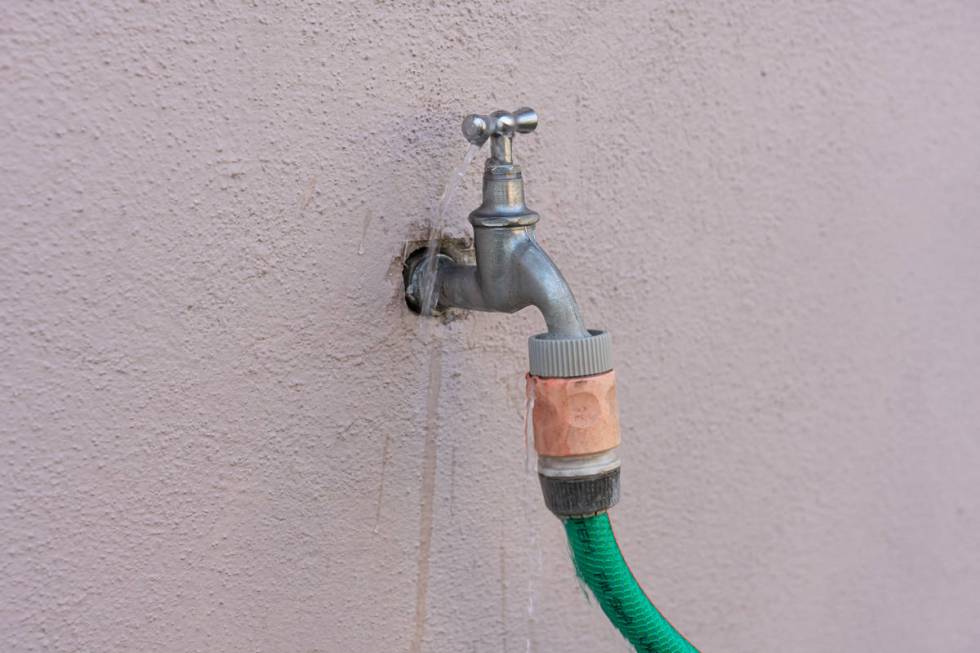Leaky hose faucet is easy fix

Q: I have a leaky hose faucet that runs up my water bill. It seems the handle no longer stops the water from running. So now, I have a front yard that could float a boat. How can I stop the leak?
A: People just don’t realize how small leaks can really add up. Whether it’s a toilet, a faucet or a hose bib, you must fix it before it gets out of hand.
A hose faucet is simple to work on because it has few moving parts. A hose bib attaches to the end of a pipe and controls the flow of water to, for example, your garden hose. It’s an easy valve to replace, but you should try a few simple fixes first.
If the faucet leaks where the handle screws in — rather than at the spout — try tightening the cap nut. It is found below the handle and tightens down with a wrench.
If that doesn’t stop the leak, you can remove the nut and add some packing. Packing is like Teflon tape that has been rolled up like a piece of rope, only the rope is small by comparison. Wrapping some packing around the stem of the faucet and screwing the cap nut back down typically stops the leak.
If your leak is coming out of the spout, then read on.
Replacing the faucet is cheap and easy. It will attach to the pipe — usually a one-half-inch copper pipe — in one of three methods: a sweat fitting, compression fitting or a threaded fitting.
A sweat fitting requires a torch to replace. You can heat up the old faucet to remove it and sweat the new one on.
You can remove a compression fitting by holding the faucet with one wrench and unscrewing the nut behind it that holds the faucet to the pipe. Between the faucet and the compression nut is a soft copper ferrule. The ferrule gets squeezed between the two and seals off any leaks.
When you install the new faucet, many people will try to replace the ferrule and nut with new ones. You can do that if you want to turn a 10-minute job into a 60-minute job. Instead, just reuse the old nut and ferrule.
The ferrule will still stop any leaks at the connection. Getting one off is a real pain.
If you are bent on removing it, you can grab a pair of channel locks or water pump pliers and use an up-and-down motion to get it to move while you apply a pulling motion toward the end of the pipe. You also can use a hacksaw and cut crosswise into the ferrule but not all the way through as you don’t want to damage the pipe. Then you can use a large standard screwdriver, place it into the groove and break the ferrule with a snapping motion.
A threaded fitting simply screws on and off. Just make sure you are holding the fitting on the end of the pipe with a wrench. If you try to crank down the new faucet without doing that, you risk twisting or even breaking the pipe in the wall. Wrap the threads with Teflon tape and screw on the new faucet, again holding onto the fitting at the end of the pipe.
By the way, before you start working on this project, make sure you turn off the water, or you will get a nice shower for your efforts.
Mike Klimek is a licensed contractor and owner of Las Vegas Handyman. Questions may be sent by email to handymanoflasvegas@msn.com. Or, mail to 4710 W. Dewey Drive, No. 100, Las Vegas, NV 89118. His web address is www.handymanoflasvegas.com.